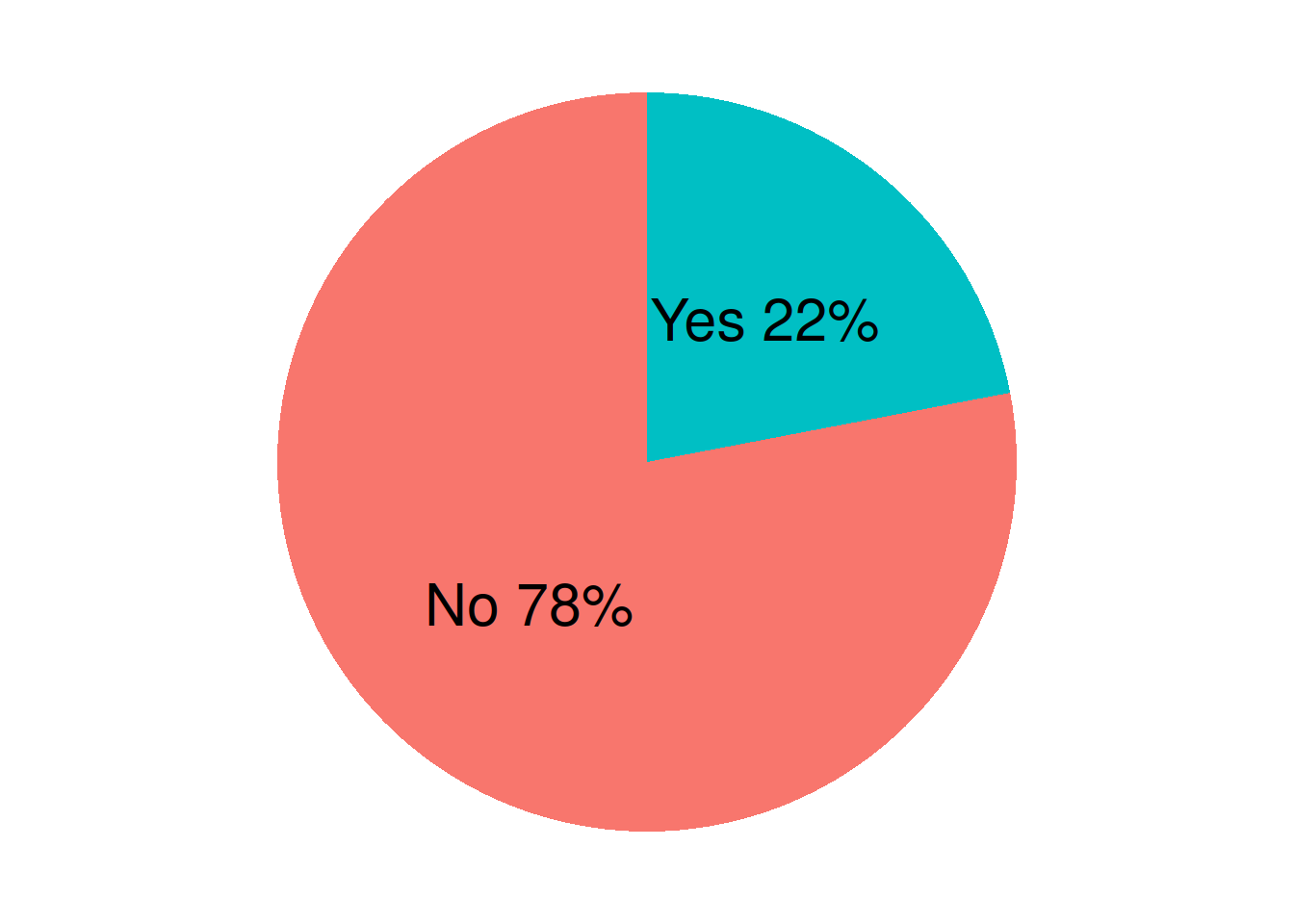11.55 Pie Chart
REVIEW

ds %>%
group_by(rain_tomorrow) %>%
count() %>%
ungroup() %>%
mutate(per=round(`n`/sum(`n`), 2)) %>%
mutate(label=paste(rain_tomorrow, percent(per))) %>%
arrange(per) %>%
ggplot(aes(x=1, y=per, fill=rain_tomorrow)) +
geom_bar(stat="identity") +
coord_polar(theta='y') +
theme_void() +
theme(legend.position="none") +
geom_text(aes(x=1, y=cumsum(per)-per/2, label=label), size=8)A pie chart is a popular circular plot showing the relative proportions through angular slices. Generally, pie charts are not recommended, particularly for multiple wedges, because humans generally have difficulty perceiving the relative angular differences between slices. For two or three slices it may be argued that the pie chart is just fine, particularly if further information is provided, such as labelling the slices with their sizes.
See also the and for explorations of the utility of pie charts.
Your donation will support ongoing availability and give you access to the PDF version of this book. Desktop Survival Guides include Data Science, GNU/Linux, and MLHub. Books available on Amazon include Data Mining with Rattle and Essentials of Data Science. Popular open source software includes rattle, wajig, and mlhub. Hosted by Togaware, a pioneer of free and open source software since 1984. Copyright © 1995-2022 Graham.Williams@togaware.com Creative Commons Attribution-ShareAlike 4.0
